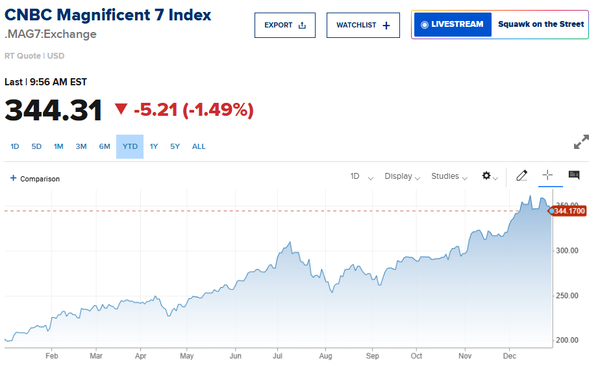Trade Alert: How I launched a hedge fund (and learned to balance my portfolio)
A few days or so after 9/11, I’d returned to Ground Zero where I had lived and been during that fateful day. I’d actually taken my cat with me when I’d run from the collapsing buildings on 9/11, but I wanted to go home to NM and needed my car. So I’d used a gas bill with my address in Battery Park City and my NY driver’s license with a matching address that I’d received just a couple days before 9/11, and told the checkpoints and officers who stopped me along the way as I worked my way down towards my apartment building that I had a cat I needed to rescue. When I got to my apartment building, which was now being used as a rescue station, I had to weave my way through the hundreds of cots lining the lobby of what had been, before 9/11 a pristine and clean new luxury apartment building.
I packed up a bag of my favorite clothes, grabbed my guitar, my laptop and stuffed my pockets with random smaller items I wanted to keep, and weaved my way back through the cots and out the back door over to my car. I dug my car out the ash and debris that was packed 12-18″ tight on the car as the rain in the days after 9/11 had combined to make my car look like it was in a plaster cast. Soon I was on the road back up through Manhattan and onto the GW Bridge and on my way to NM. A month later, I’d settled into a rented bachelor pad apartment in Austin, but wasn’t content there as I wanted to move back to the Center of the Universe and launch a hedge fund.
For two years at that point, I’d been writing a telecom investment newsletter for TheStreet.com and Jim Cramer had apparently become a fan of mine enough that when the Editor in Chief, the late David Morrow, told him that I wanted to launch a hedge fund, Jim reached out to me and invited me to his offices in NYC to discuss it. He gave me the names and numbers of various contacts of his at Bear Stearns, Goldman and other firms that provide what are called “prime brokerage services”, and other resources for hedge funds and told me I could use his name when I called them so I’d be sure they’d take the call.
I’d long ago learned the importance of reaching out to anybody who can help you when you’re starting a new venture or adventure, and Doug Kass was another Wall Street big shot who not only met with me at his place in Florida, but also introduced me to several “soft-dollar brokers,” who help fund your hedge fund start up costs in exchange for doing a corresponding amount of trading at their firm over time.
I sold my car and bought a new one and drove back to NYC to start afresh there too. Starting a hedge fund as a recently laid-off telecom executive in the months after 9/11 as the stock markets were crashing, the economy was cooling, and fear was high, wasn’t exactly easy. I had realized that if I not only borrowed every dollar from my credit cards I could along with plowing every last dollar of savings I had into launching the hedge fund would have left me with nothing to invest in my own hedge fund.
But with the help of the soft-dollar brokers and with the faith in me that came from me having been a referral from Jim Cramer, from his contacts at Bear Stearns, which had eventually become my “Prime Broker” and which held my hedge fund’s assets and settled all my fund’s trades from around the Street at various other brokers, including the soft-dollar brokers, I launched a tech-centric hedge fund on 10/1/2002. The Nasdaq bottomed exactly two weeks later. I closed the fund on 10/1/2007 to take a job as a TV news anchor on Fox Business and the market topped just a few months after that, eventually crashing in 2008 and 2009 of course.
Along the way during those five years of running my hedge fund, I continued to meet with Cramer to discuss my hedge fund and the markets and stocks and what not. I’d show up with a list of my positions in order of largest to smallest and we’d go through them and rate each of them on a scale of 1 to 10. 1 being “Get out of this position now!” and 10 being “Sell the farm, I’ve found a perfect investment.” I’ve never given a stock a 10-rating before, as I don’t think is any such thing as a perfect investment. Using that list and those ratings along with the analysis and discussions that Cramer and I would get into, I’d leave those meetings with a good grasp of what stocks I should be buying more of or trimming some of or even selling entirely.
I started creating that list of positions by weighting and with ratings on each every weekend to analyze while I was running the fund. My style of investing and trading is vastly different than Jim Cramer’s and always has been and his first and best book, he talks about how they did that kind of listing and rating much more often than just once a week, sometimes doing it several times a day. Nowadays as I manage only my own money, my ratings and weightings don’t change nearly as often now as they used to when I ran a fund. Your style of investing and trading should be unique to you too. But listing your positions in front of your in order of largest to smallest and seeing a rating next to each position, even if you’re just in mutual funds and retirement accounts, should be done at least a couple times a year. It helps you keep balance in your portfolio and keeps your from riding what might have become a loser investment when your rating on it has changed.
I typically look to sell stocks in my portfolio if they fall to a rating of 6 for more than a few months. And I look to sell any stock that falls to a 5 or below rating almost immediately.
Finally, I also keep a list of stocks that I track and that catch my eye. Recently, the highflying momentum stocks in sectors like cloud, social, and digital security have been absolutely decimated. The trashing across the board in these stocks means that the good have been sold down as hard or even harder than some of the bad, and I’ve got a few 9-rated stocks that I want to add to the portfolio today.
We’ll call it a high-growth basket and I want to step in and start with these three names today:
Yelp, which is down nearly 50% from its earlier highs this year and which is growing revenue at 50% per year. RocketFuel, which is down even more than that from its earlier highs this year and is growing revenue at 60-70% per year. And FireEye, down 75% from its recent highs and which grew revenue at 150% last year and could grow it 100% again this year, though with no earnings in sight.
In my own personal portfolio, I’ll look to build Yelp up into a full-sized normal position, as its my favorite long-term pick of the three. And I’ll likely only put less than 1/3 of that much money into the combined basket position of the other two for now, as I start to build those positions but I want to give myself lots of room and time to do so.




